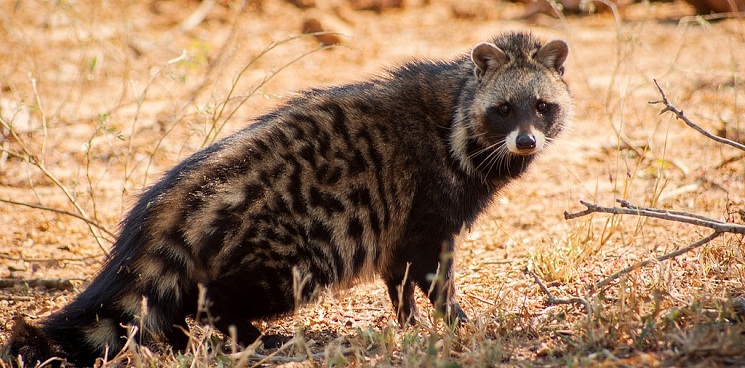- Home
- Conservancy
- African Civet Cat
WHERE TO SEE African Civet Cat
Description
The African civet (Civettictis civetta) is the largest representative of the African Viverridae. It is the sole member of its genus.African civets can be found from coast to coast across sub-Saharan Africa. They are primarily nocturnal and spend the day sleeping in dense vegetation. During the night, when they are the most active, they can be found in a wide variety of habitat consisting of thick forest to open country.
The African civet is a solitary mammal that is easily recognizable by its unique coloration; the black and white stripes and blotches covering the coarse pelage of the animal are extremely variable and allow it to be cryptic. The black bands surrounding the African civet
Fun Facts
Diet The African civet has an omnivorous diet that includes insects (Orthoptera, Coleoptera and Isoptera), fruit (Ficus species), Muridae, birds, reptiles (Agama spp and Striped skink), frogs, fish, crabs, carrion and eggs. In Zimbabwe it was found that insects are the most common part of the diet in the warmer wet summer months (October to April) and this changes in the colder drier months of winter (May to September) to include more mice, reptiles and birds.Green grass is also frequently found in faeces and this seems to be linked to the eating of snakes and amphibians.
Head of African civet Cultural use The perineal gland secretion, civet, has been the basic ingredient for many perfumes for hundreds of years and is still being used today although on the decline since the creation of synthetic musk. African civets have been kept in captivity and milked for their civet which is diluted into perfumes. They can secrete three to four grams of civet per week and it can be sold for just under five hundred dollars per kilogram. The WSPA says that Chanel, Cartier, and Lanc
